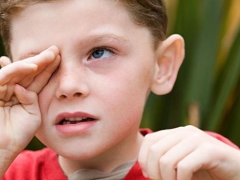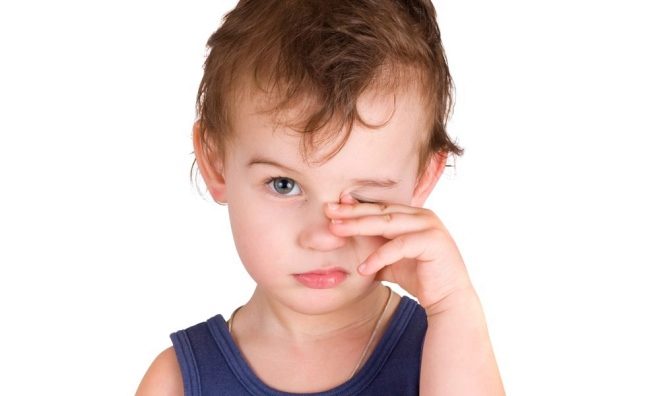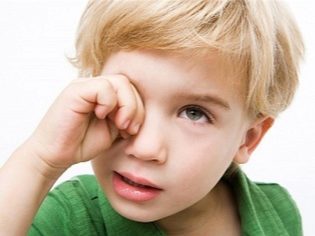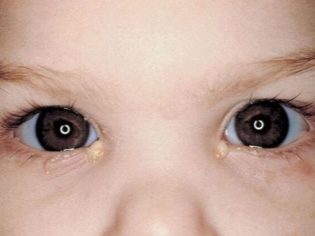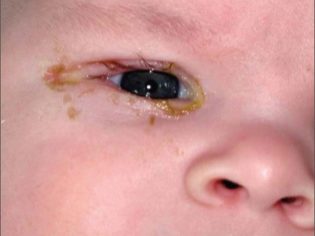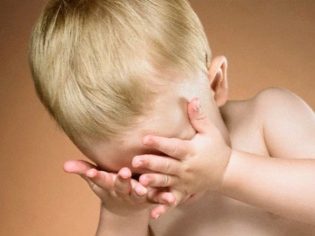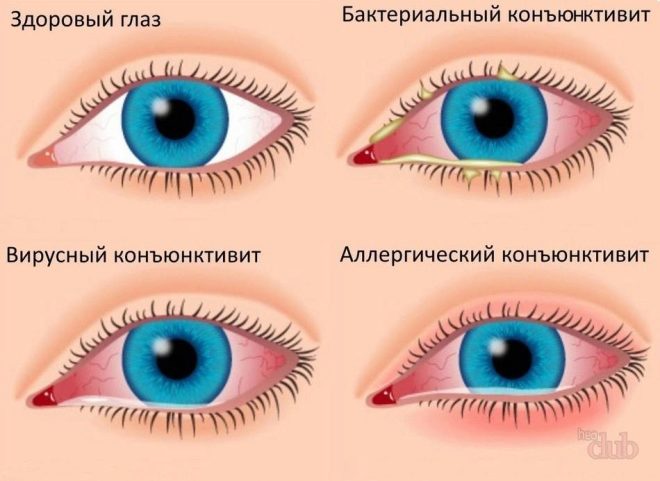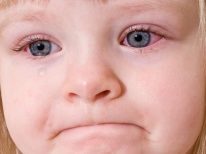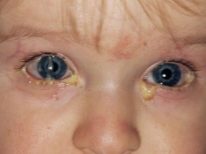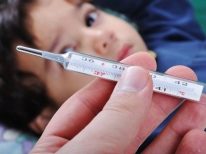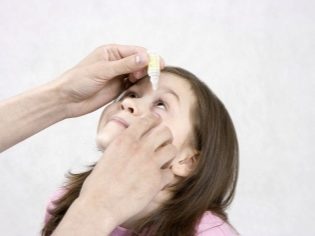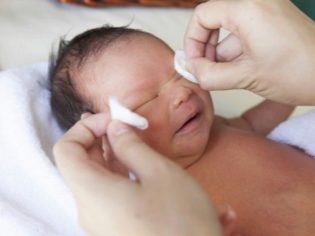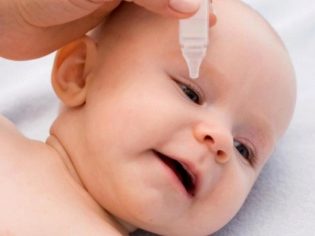Bacterial conjunctivitis in children
Inflammatory eye diseases are among the most common diseases in babies of different ages. The peak incidence is observed in children 2 years and up to 10 years. Babies can get sick from almost the first days after birth. Conjunctivitis resulting from the ingress of bacteria is found in the vast majority of cases.
The most common causes
Bacterial infections top the list of acute inflammatory eye diseases in babies. Modern science today has more than half a million different pathogenic bacteria. Once in the child's body, they multiply rapidly and cause severe inflammation relatively quickly.
In pediatric ophthalmic practice, staphylococci or streptococci are often the perpetrators of bacterial conjunctivitis. They are perfectly preserved in the external environment. Without the use of special disinfectants, the bacteria have long existed in different rooms.
A particularly high concentration of these microorganisms is noted in crowded groups. In children's educational institutions there is a high level of bacteria in the ambient air.
Staphylococcus also tolerates adverse environmental conditions very well. In cold and poorly heated rooms, they can live for a relatively long time.. When released into favorable conditions, microorganisms begin to multiply actively and can cause outbreaks of infectious diseases.
The mucous membrane of the eye or conjunctiva is very well supplied with blood. Microorganisms trapped in the blood quickly spread throughout the body through the bloodstream, causing damage to other organs.
Bacterial conjunctivitis is quite a dangerous disease, as it can occur with various adverse complications.
Incubation period
Before the appearance of the first characteristic symptoms of the disease, it takes quite a long time. This time period is called the incubation period. For bacterial conjunctivitis It usually lasts 7-10 days.
Dr. Komarovsky gives advice on how to distinguish viral conjunctivitis from bacterial. If the disease is caused by a virus, then the incubation period will be less. On average, it is 3-5 days.
During the time before the onset of the first manifestations of the disease, the number of bacteria in the children's body increases significantly. Once in favorable conditions of existence, they multiply rapidly. Spreading with the bloodstream throughout the body, pathogens cause vivid manifestations of inflammatory disease.
What are the main symptoms?
Bacterial conjunctivitis can occur with a wide variety of clinical manifestations. Since microorganisms damage the mucous membrane of the eyes, visual disturbances are the most common signs of inflammation.
Conjunctivitis caused by bacteria usually occurs with the following symptoms:
- Severe tearing. The flow of fluid from the eyes of the baby during the acute period of the disease is observed almost constantly. In some babies, tearing can begin with only one eye. After a few hours, the inflammation goes to the second.
- Suppuration. If the disease is caused by bacterial flora, then the discharge from the eyes becomes purulent.In some cases, when infected with staphylococcus in babies, a green discharge can be observed. Some bacteria give a more crimson hue. Pus from the peephole is quite sticky, poorly removed during hygiene procedures.
- Red eyes. With bacterial conjunctivitis, redness is moderate. Severe redness occurs only in severe forms of the disease and is more characteristic of viral variants of the disease. In babies with bacterial conjunctivitis, redness of both eyes is observed. This symptom may persist for another week after recovery.
- Feeling of a foreign object or "sand" in the eyes. Often is the very first sensation in the early stages of the disease. With the appearance of this symptom, you can already suspect the rapid development of other signs of conjunctivitis.
- Soreness in bright light. The sun's rays falling on the inflamed mucous membrane of the eye, cause increased pain and tearing. In the acute period of the disease, the baby feels better in a darker room. To the mucous membrane of the eye quickly healed and additionally not injured, the nursery is better to curtain well.
- The deterioration of the general condition of the child. Kids during the period of the disease become more capricious, their appetite decreases. Severe pain does not allow the child to often open the eyes. He starts blinking more often. With a more pronounced pain syndrome, children cry and refuse to eat, try to spend more time in bed or sleep.
- The appearance of intoxication. Any bacterial process causes fever, headache and increases the general weakness. This phenomenon is associated with the abundance of bacterial toxins secreted by microorganisms. Body temperature in babies usually rises to 38-39 degrees. With this increase, fever may occur, as well as chills.
The development of numerous symptoms in conjunctivitis occurs very rapidly. During the first two days, the pain syndrome and lacrimation increases many times in babies. To prevent the development of dangerous complications that can cause persistent visual impairment in a child, parents should urgently show the baby to an ophthalmologist. The doctor will establish an accurate diagnosis and prescribe all the necessary in this case, drug therapy.
Treatment
Any bacterial disease can cause a range of adverse effects. To prevent this, a mandatory prescription of medicines is required.
Most often, doctors recommend various drops for eyes with bactericidal action. However, the use of such drugs is not always sufficient to completely remove bacteria from the body. In many cases, the prescription of antibiotics in pills is required.
All treatment for bacterial conjunctivitis can be reduced to the implementation of certain prescriptions:
- The use of antibacterial drugs prescribed by a doctor. They may be in the form of drops, tablets or injections. Most often, albumin, tetracycline and chloramphenicol ointment are used to treat bacterial infections of the eye. These drugs have proven themselves in children's practice and practically do not cause adverse side effects in babies. Ointment lay sterile glass rod for damaged eyelid 3-4 times a day. Typically, the duration of such treatment is not more than 10 days. The appointment of pills and injections of antibiotics makes only a doctor. In his recommendations, he specifies the multiplicity, dose and duration of such an antibacterial course.
- Eye wash. To this end, it is better to use ordinary boiled water with the addition of antiseptics. For babies from the very first months of life, chamomile decoctions are perfect. Moistened cotton pad to wipe the eyes of the baby from the outer edge of the eye toward the nose.Cotton pads must be changed for each side. You can wash your eyes in the acute stage of the disease every hour.
- Ensuring proper rest. During sleep, the children's body is restored and gaining strength to combat the disease. Every child under five must sleep during the day. Babies who have an infectious eye disease should definitely rest in the daytime with their eyes closed. At this time, the mucous membrane recovers and heals.
- Medical nutrition. In the acute period of the disease, babies need to get food with enough protein. Such products will help strengthen the immune system and speed recovery. For kids of any age, poultry and veal are excellent, as well as white fish. You can supplement the diet with cereals, as well as vegetable and fruit purees.
- Optimum water mode. To eliminate all bacterial toxins from the body, the child must drink a lot. It is better that the baby consumes at least 1.5 liters during the day during the illness. You can drink regular boiled warm water. In the acute period of the disease, fruit and berry compotes or fruit drinks are prepared for babies. You can cook a decoction of wild rose. Such drinks are rich in vitamin C and beneficial trace elements.
- Compliance with the regime of the day. During the acute period of the disease should not walk with the baby on the street. It is better to postpone such walks until recovery. This can especially be dangerous in the summer. Bright sunshine, falling on the irritated mucous membrane, cause additional damage to it and significantly increase inflammation.
- Bathing in the early days of the disease is also better to postpone. Especially if the child has a fever or fever. After the bath procedures, the baby can easily become supercooled. When hypothermia weakens the strength of the immune system, which significantly reduces the strength of the baby when fighting infection.
The process of instillation of drops in the eyes of a child, you can see in the next video.
Prevention
Compliance with preventive measures will protect the children's body from possible bacterial infection. In babies with strong immunity, the likelihood of developing inflammatory diseases is significantly reduced. Weakened children or children who have recently suffered a cold, are at risk of developing infectious eye diseases.
In the prevention of bacterial conjunctivitis of great importance is the observance of hygienic rules. Each child must have their own personal hygiene products and towels. If there are several kids of different ages in the family, then they should use only their own dishes and mugs.
Wipe your face with a clean towel. It is advisable to wash textiles at least 2-3 days a week. For newborn babies, wash daily. Be sure all towels should be ironed on both sides with a hot iron.
Strengthening immunity is also an important element in the prevention of inflammatory diseases. Proper healthy eating with a sufficient content of vitamins will greatly strengthen the weakened children's body. Daily active walks in the fresh air are great for the younger baby.
For children who attend educational institutions, their visits during outbreaks of infectious diseases should be limited. As a rule, such a temporary quarantine is 7-10 days. In schools and kindergartens at this time it is necessary to conduct a special disinfecting treatment.
Bacterial conjunctivitis is a fairly common inflammatory disease in babies of different ages. This eye pathology is well cured by the use of antibacterial drugs. After a timely, high-quality treatment, the babies recover completely.
For details, see below in the transfer of Dr. Komarovsky.
